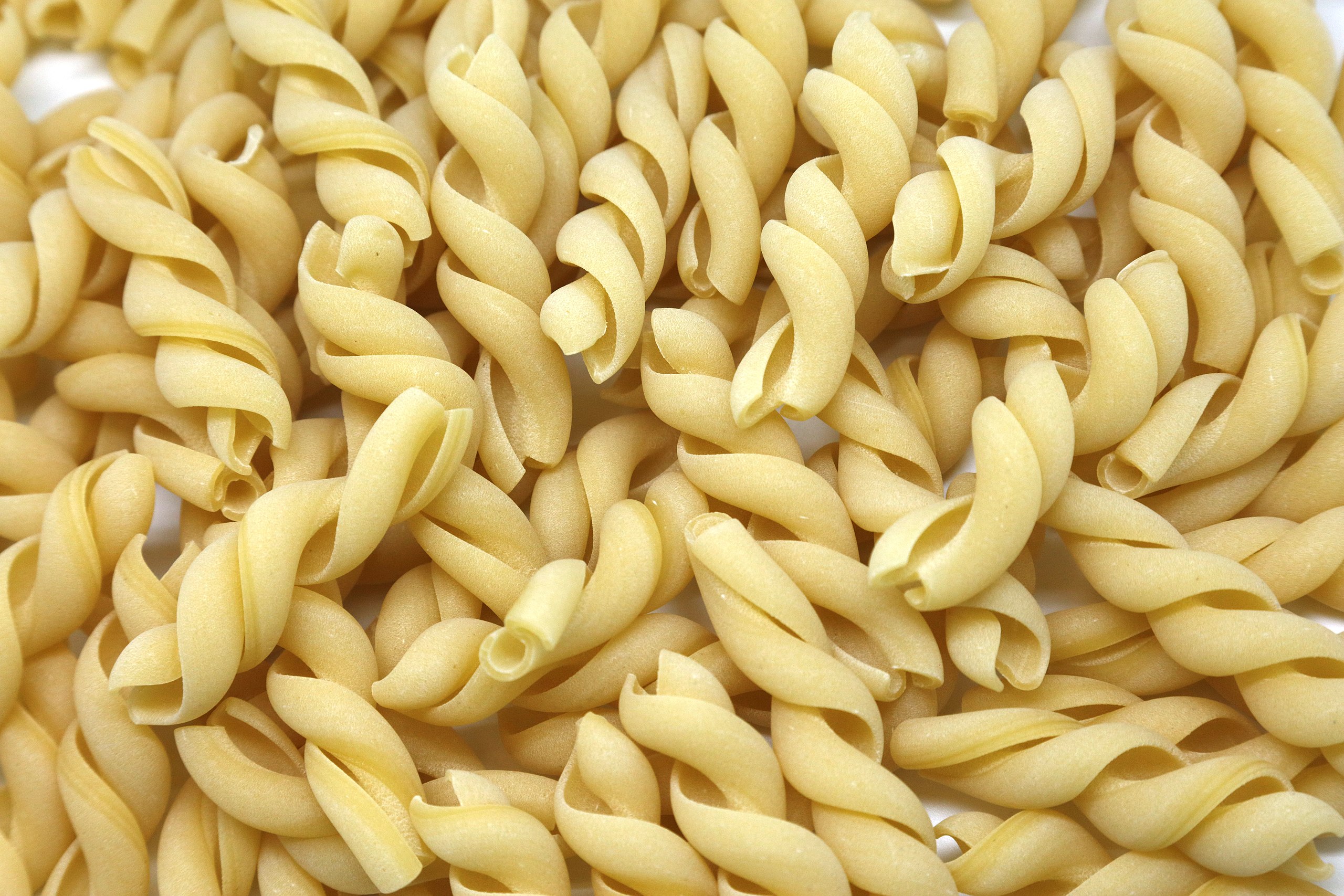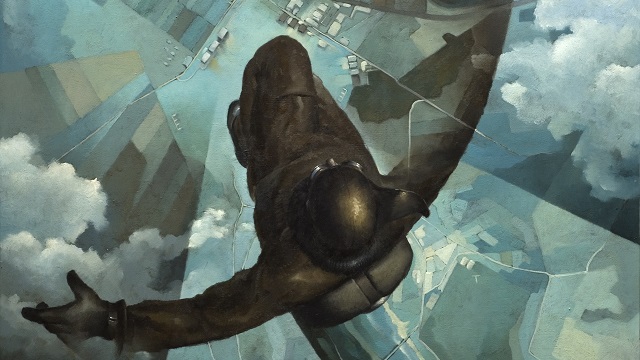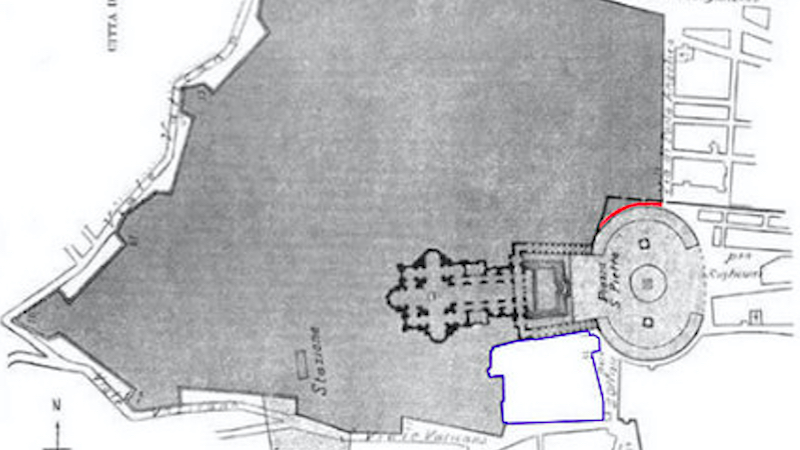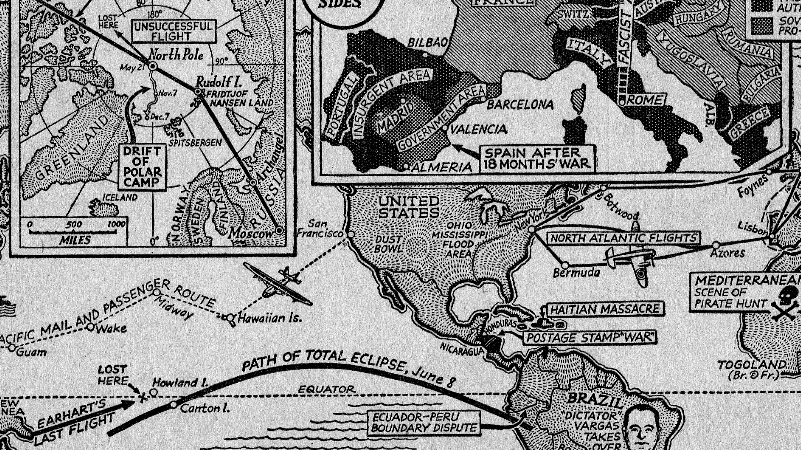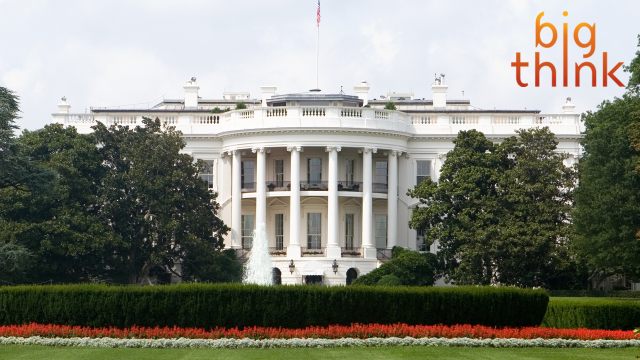Making Italy Great Again: a Map of Mussolini’s Mediterranean Ambitions
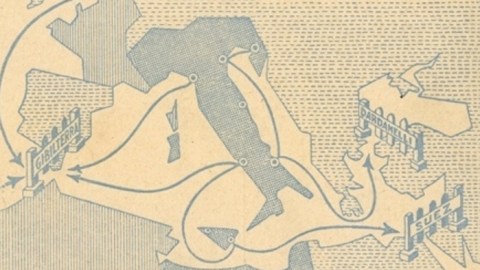
Why is Italy so big? And why is it fenced in on three sides? The map itself offers very few clues, but nothing piques the interest like a good old treasure hunt.
First clue: the title. L’Italia nei mari translates as ‘Italy in the seas’. The map is not concerned with Italy’s continental geopolitics, but with its maritime position. That makes sense. Most of Italy is a peninsula that juts out into the Mediterranean. Only 20% of its 9,500-km (5,900-mi) borders are with its terrestrial neighbours, the rest is with the Adriatic (in the east), Ionian (south), Tyrrhenian (southwest) and Ligurian (northwest) Seas.
The exaggerated size of the Italian peninsula stresses the relevance of maritime affairs to Italy’s foreign policy. That impertinent bending of geographical truth is a sign of the times. To be exact: 1929, the date mentioned on the map – second clue.
This was the heyday of Italian fascism. There wasn’t yet a Spanish Republic for Franco to rebel against, and Hitler was still struggling to reverse the electoral decline of his Nazi party. But in Italy, Benito Mussolini had been consolidating his grip on power since his coup in 1922. He was now the country’s undisputed dictator (a.k.a. Duce – ‘Leader’), and an example to aspiring fascists elsewhere in Europe.
Mussolini infused Italian nationalism with nostalgia for Imperial Rome, thus providing a very specific framework for its quest for spazio vitale (‘living space’, or as the Germans would later call it: Lebensraum).

By 1929, Italy already controlled Libya (marked in the same colour as Italy on this map), and was sending droves of colonists over. Outright annexation would follow a few years later. Italian control over the Mediterranean was both a means and an end of Italy’s expansionism. The ultimate goal was to recreate the Mare Nostrum – ‘Our Sea’ – of olden times: the Mediterranean as a Roman lake.
In 1929, the greatest competitors to Italy’s territorial ambitions in the Mediterranean were not the British, but the French, the only other nation marked separately on this map. And not out of brotherly love, it must be said. France is intentionally diminished in size, to increase the contrast with that magnified Italy. On a realistic map, France clearly would be the larger of the two – 551,500 km2 (213,010 sq. mi) vs. 301,000 km2 (116,000 sq mi) for Italy.
The area east of Libya is shown in the same pattern as France, indicating its holdings in North Africa (today’s Tunisia, Algeria and Morocco), the non-stated goal of which is to mark out those territories for a future takeover.
The same can be said for the three gates blocking Italy’s exit from the Mediterranean: Gibilterra (Gibraltar), Suez and the Dardanelli (Dardanelles). All controlled by foreign powers, making Italy dependent on their good will for the exit and entrance to ‘their’ sea. The unspoken implication is equally belligerent.
This map is more than a mere representation of geopolitical facts: it’s a pamphlet that serves both to instil nationalist pride in the great nation of Italy (although not quite as great as on this map) and in its holdings in North Africa, its so-called ‘Fourth Shore’; and to point out some of the obstacles to further expansion – foreign control of the three Mediterranean gateways, and the massive French holdings next to their own.
As a call to action using cartography instead of rhetoric, it’s a great example of a propaganda map. Its simple yet subtle message was produced by one of early 20th-century Italy’s best-known artists: A. Soffici – third clue.
Ardengo Soffici (1879-1964) was an Italian writer, painter and all-round intellectual, who like many Italian artists of his time made the transition from avant-garde art to fascism. For most of his twenties, Soffici lived in Paris, where he fell in with Picasso, Braque and others. Back in Italy from 1907, he popularised not only their work, but Impressionism, Symbolism, Futurism and Cubism in general.
In 1925, Soffici signed the Manifesto degli intellettuali fascisti, pledging support for the new regime. In 1937, he distanced himself from Mussolini personally, but would remain loyal to the regime. He was one of the signatories, in 1938, of another Manifesto, signed by a number of intellectuals, in support of the recently adopted racial laws in Italy.
After the fall of the fascist regime in 1944, he pledged loyalty to the Italian Social Republic, the German puppet state set up in northern Italy with Mussolini at its head. He was one of the co-founders of Italia e Civilta, a wartime magazine advocating patriotism, the ‘social’ character of fascism, and loyalty to the Germans.
At the end of World War Two, Soffici was one of several Italian artists interned as a Prisoner of War for his support of fascism. He was released without charge, and withdrew to his home in Tuscany, where he continued working until his death in 1964 – limiting himself to the less controversial subject of landscape painting.
Image in the public domain, found here on Pinterest
Strange Maps #681
Got a strange map? Let me know at strangemaps@gmail.com.
